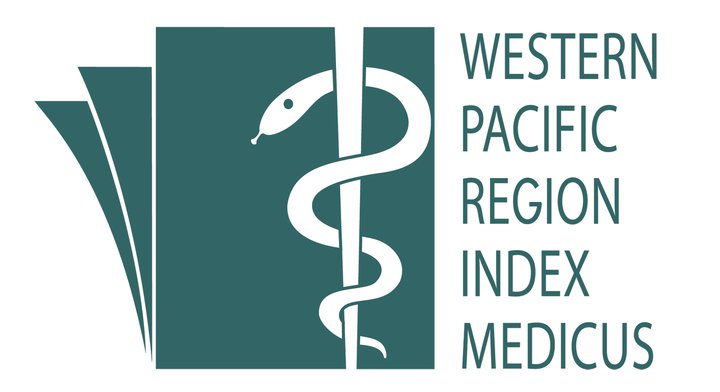Reliability and Validity of the Physical Activity Questionnaire for Older Children (PAQ-C) In Malay Language
Keywords:
physical activity questionnaire for older children (PAQ-C), Reliability, ValidityAbstract
Introduction
Physical activity assessment in children is first step in assessing the relationship between activity and health, as well as the determinants of childhood physical activity and changes in activity level. Physical Activity Questionnaire for Older Children (PAQ-C) is self- administered questionnaires to assess physical activity among older children. The objective of this study was to determine the validity and reliability of Physical Activity Questionnaire for Older Children in Malay language PAQ-C(M).
Methodology
The validation study was done among 73 students aged 10 to 17 years old. The PAQ-C was translated into Malay language using forward and backward translation. The evaluation of the psychometric properties included internal consistency, test-retest reliability and criterion validity. Reliability of PAQ-C(M) was determine using Cronbach alpha and intra-class correlation coefficient (ICC). The PAQ-C(M) was administered twice in one week interval to assess test-retest reliability. Criterion validity was assess between PAQ-C(M) and 3 Day Physical Activity Recall (3DPAR).
Results
The internal consistency of PAQ-C(M) assessment calculated in this study was α = 0.75 and α = 0.77 for assessments one and two, respectively. The ICC between individual items of PAQ-C(M) was 0.59 to 0.91 indicate that moderate to good correlation. The Spearmen correlation coefficients between PAQ-C(M) and 3DPAR was acceptable (rs=0.60, p<0.01).
Conclusion
In conclusion, the findings of this study suggest that the PAQ-C(M) has moderate to good reliability and validity in assessing physical activity among older children and adolescent. Future validation of PAQ-C(M) against different measures such as accelerometer is recommended.Â
Â
Keywords
Physical Activity Questionnaire for Older Children (PAQ-C), reliability, validity
Â
 (242 words)
References
Hallal PC, Victora CG, Azevedo MR, Wells JC. Adolescent physical activity and health. Sports Med. 2006;36(12):1019-30.
Strong WB, Malina RM, Blimkie CJR, Daniels SR, Dishman RK, Gutin B, et al. Evidence Based Physical Activity for School-age Youth. The Journal of Pediatrics. 2005;146(6):732-7.
Harris KC, Kuramoto LK, Schulzer M, Retallack JE. Effect of school-based physical activity interventions on body mass index in children: a meta-analysis. Can Med Assoc J. 2009;180(7):719-26.
American Heart Association. [Accessed May 23. Physical Activity and Children. 2012 http://www.heart.org/HEARTORG/GettingHealthy/PhysicalActivity/Physical-Activity-and-Children_UCM_304053_Article.jsp.
Janssen I. Physical activity guidelines for children and youth. Appl Physiol, Nutri, and Metab. 2007;32(S2E):S109-21.
Corder K, Ekelund U, Steele RM, Wareham NJ, Brage S. Assessment of physical activity in youth. J Appl Physiol (Bethesda, Md : 1985). 2008 Sep;105(3):977-87. PubMed PMID: 18635884. Epub 2008/07/19. eng.
Biddle SJ, Gorely T, Pearson N, Bull FC. An assessment of self-reported physical activity instruments in young people for population surveillance: Project ALPHA. Int J Behav Nutri Phys Act. 2011;8(1):1.
Crocker PRE, Bailey, D. A., Faulkner, R. A., Kowalski, K. C., & McGrath, R. . Measuring general levels of physical activity: Preliminary evidence for the Physical Activity Questionnaire for Older Children. Med Sci Sports and Exerc. 1997 29:1344-9.
Kowalski KC, Crocker PR, Donen RM. The physical activity questionnaire for older children (PAQ-C) and adolescents (PAQ-A) manual. College of Kinesiology, University of Saskatchewan. 2004;87.
Kowalski KC, Crocker P, Faulkner RA. Validation sf the physical activity questionnaire for older children. Pediatr Exerc Sci. 1997;9(4):174-86.
Kowalski KC, Crocker PR, Kowalski NP. Convergent validity of the physical activity questionnaire for adolescents. Pediatr Exerc Sci. 1997;9:342-52.
Tessier S, Vuillemin A, Briancon S. Review of physical activity questionnaires validated for children and adolescents. Science & Sports 2008;23 118-25.
Sample size for correlation program [Accessed Jan. 2014. Computer Program to Calculate Sample Size Requirement for Estimating the Correlation Coefficient; https://www.statstodo.com/SSizCorr_Pgm.php.
Machin D, Campbell MJ, Tan SB, Tan SH. Observer Agreement Studies. Sample Size Tables for Clinical Studies. London, England: Wiley-Blackwell 2009.
Acquadro C, Conway K, Hareendran A, Aaronson N. Literature review of methods to translate health-related quality of life questionnaires for use in multinational clinical trials. Value in health. Value Health. 2008 May-Jun;11(3):509-21. PubMed PMID: 18179659. Epub 2008/01/09. eng.
Dan S, Nasir MM, Zalilah M. Sex and ethnic differentials in physical activity levels of adolescents in Kuantan. Malays J Nutr. 2007;13(2):109-20.
Lee KS, Trost SG. Physical activity patterns of Singaporean adolescents. Pediatr Exerc Sci. 2006;18(4):400.
Pate RR SJ, Webber LS, Dowda M, Murray DM, Young DR, Going S. . Age related change in physical activity in adolescent girls. J Adolesc Health. 2009;44(275-282.).
Lee KS, Trost SG. Validity and reliability of the 3-day physical activity recall in Singaporean adolescents. Res Q Exerc Sport. 2005;76(1):101-6.
Weir JP. Quantifying test-retest reliability using the intraclass correlation coefficient and the SEM. J Strength Cond Res. 2005;19(1):231-40.
Lohr KN. Assessing health status and quality-of-life instruments: attributes and review criteria. Qual Life Res. 2002;11(3):193-205.
Landis JR, Koch GG. An application of hierarchical kappa-type statistics in the assessment of majority agreement among multiple observers. Biometrics. 1977:363-74.
Janz KF, Lutuchy EM, Wenthe P, Levy SM. Measuring activity in children and adolescents using self-report: PAQ-C and PAQ-A. Med Sci Sports Exerc. 2008;40(4):767.
Moore JB, Hanes Jr JC, Barbeau P, Gutin B, Treviño RP, Yin Z. Validation of the Physical Activity Questionnaire for Older Children in children of different races. Pediatr Exerc Sci. 2007;19(1):6.
Chinapaw MJ, Mokkink LB, van Poppel MN, van Mechelen W, Terwee CB. Physical Activity Questionnaires for Youth. Sports Med. 2010;40(7):539-63.
Downloads
Published
How to Cite
Issue
Section
License
IJPHR applies the Creative Commons Attribution (CC BY) license to articles and other works we publish. If you submit your paper for publication by IJPHR, you agree to have the CC BY license applied to your work. Under this Open Access license, you as the author agree that anyone can reuse your article in whole or part for any purpose, for free, even for commercial purposes. Anyone may copy, distribute, or reuse the content as long as the author and original source are properly cited. This facilitates freedom in re-use and also ensures that IJPHR content can be mined without barriers for the needs of research.





